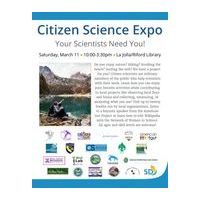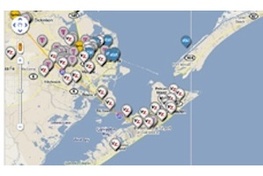Search for Glyptoparus sp. [Browse] returned 54 results.
Refine results
Refine results
Section
- Site Page (32)
- Biodiversity Science project (14)
- Data resource (3)
- Support article (3)
- Species (2)
Image available
- Yes (2)
Lifeforms
- Fish (2)
Taxonomic status
- Accepted (2)
-
genus: Glyptoparus
Kingdom: ANIMALIA
-
species: Glyptoparus delicatulus – Delicate Blenny
Kingdom: ANIMALIA
-
Data resource: Maximising fish detection with eDNA metabarcoding, Browse Island, Australia (2017)
Water samples were collected from the intertidal reef of Browse Island; a tropical, remote island in the Timor Sea. Aliquots from a single 20700 ml sample and multiple 2000 ml samples were filtered in various volumes (25 ml to 2000 ml) across two membrane sizes (0.20 m and 0.45 m). A fish metabarcoding assay was used to characterise the fish diversity within aliquots. All samples, except one, yielded fish DNA sequences. Two hundred and nine operational taxonomic units (cf...
-
Data resource: Habitat associations of cetaceans and seabirds in the tropical eastern Indian Ocean, Browse Basin, Australia (2008)
There is an increasing demand for integrated pelagic surveys to support ecosystem-based management of marine environments and their associated marine life. The Browse Basin in the tropical eastern Indian Ocean was surveyed using ship line transects to determine habitat associations of cetaceans and seabirds with submarine topography and local oceanographic conditions during winter and spring 2008...
-
Data resource: Species identification of worms from grabs - Leveque Shelf (Browse Basin), Western Australia SOL5754 (GA0340)
In May 2013, Geoscience Australia (GA) and the Australian Institute of Marine Science (AIMS) undertook a collaborative seabed mapping survey (GA0340/ SOL5754) on the Leveque Shelf, a distinct geological province within the Browse Basin, offshore Western Australia...
-
Site Page: ALA for community and schools – Atlas of Living Australia
The ALA is Australia’s one-stop-shop for information on our diverse wildlife: you can look up facts, explore species in your area, and view images of species in the wild and specimens in museums. The ALA also enables you to make real contributions to biodiversity science: you can upload observations, help digitise museum collections, and set up your own community biodiversity projects...
-
Biodiversity Science project: Citizen Science Expo 2017
This will be a citizen science expo for citizen science projects in San Diego, CA open to the general public who is welcome to come and browse the various citizen science booths.

-
Site Page: “Collectory” – Collections & datasets – Atlas of Living Australia
The “Collectory” is the system that allows users to search for and view metadata on institutions, collections & datasets Browse specimen collections Search for dataset & data providers
-
Site Page: All sites, services & tools – Atlas of Living Australia
Popular sites & services Search ALA Search species, datasets, regions, localities, environmental layers, and more. Spatial Portal Map, visualise and analyse relationships between species, location and environment. Help Access ALA support articles, user guides and case studies, and contact ALA. Explore your area Enter a street address, GPS coordinates, postcode or place name to find out what species live near you...
-
Biodiversity Science project: OpenSignalMaps
With your help, OpenSignalMaps is creating a comprehensive database of cell phone towers, cell phone signal strength readings, and Wi-Fi access points around the world. This data is collected via an Android application and uploaded to the project's servers, taking care to use as little processing power and battery life as possible...


